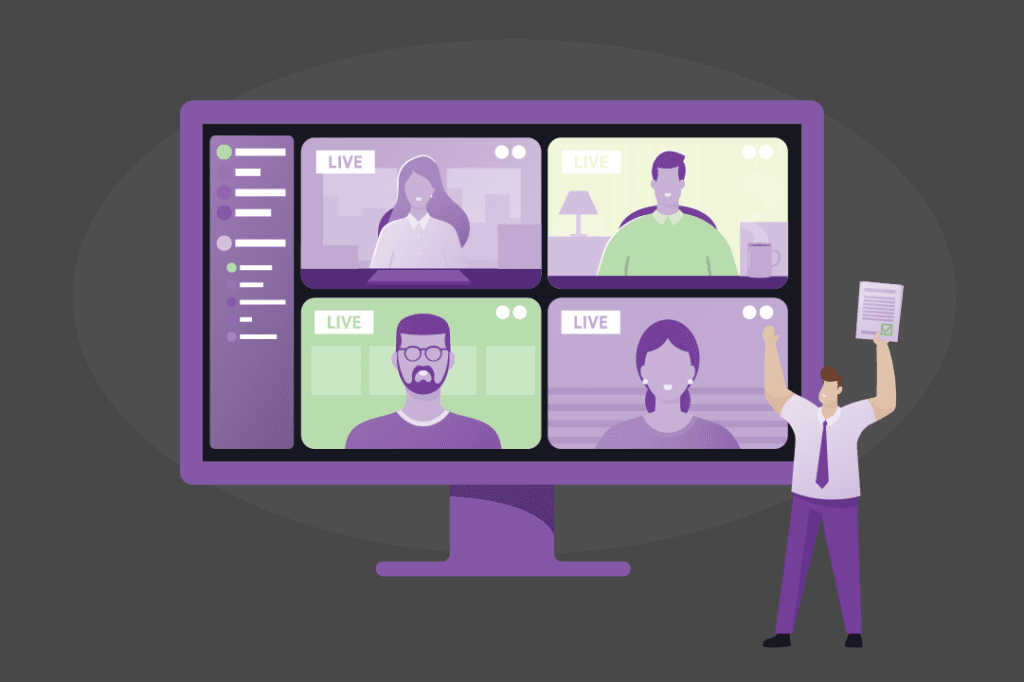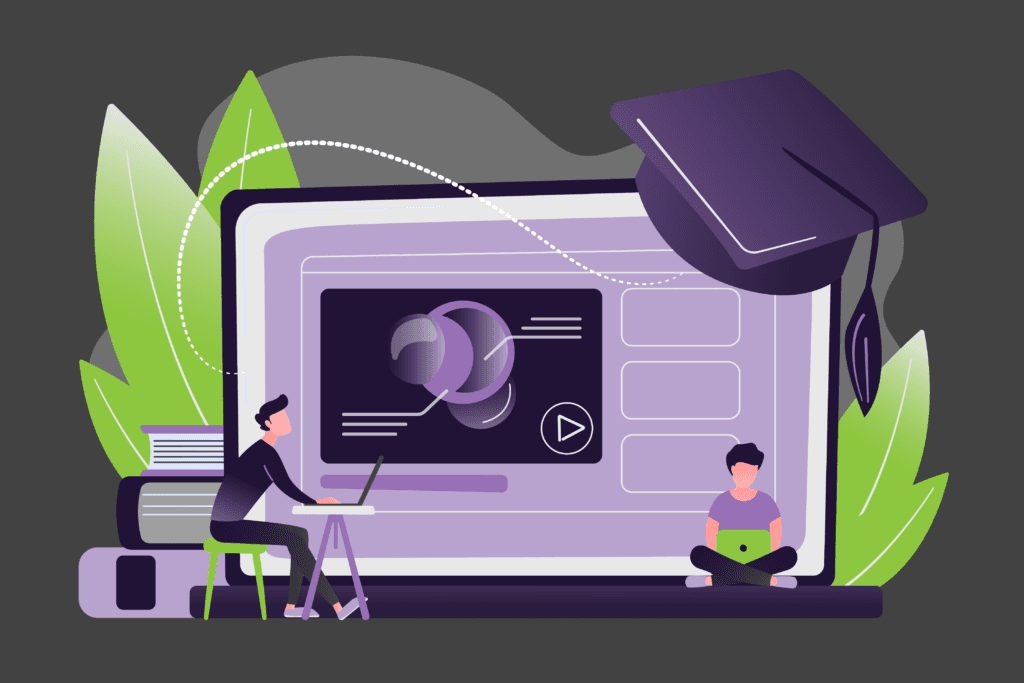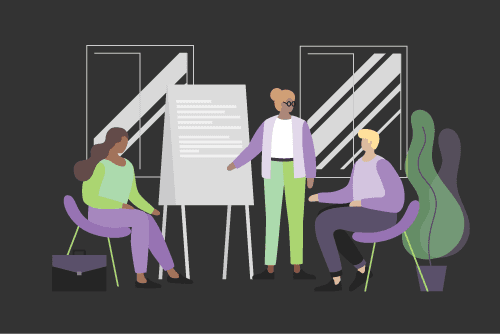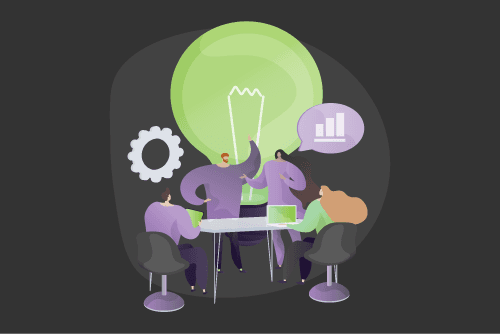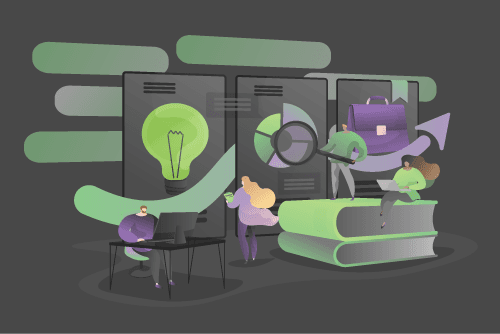Bridging the Digital Divide: An Exploration of Inadequate Tactics and the Sustainable Solution
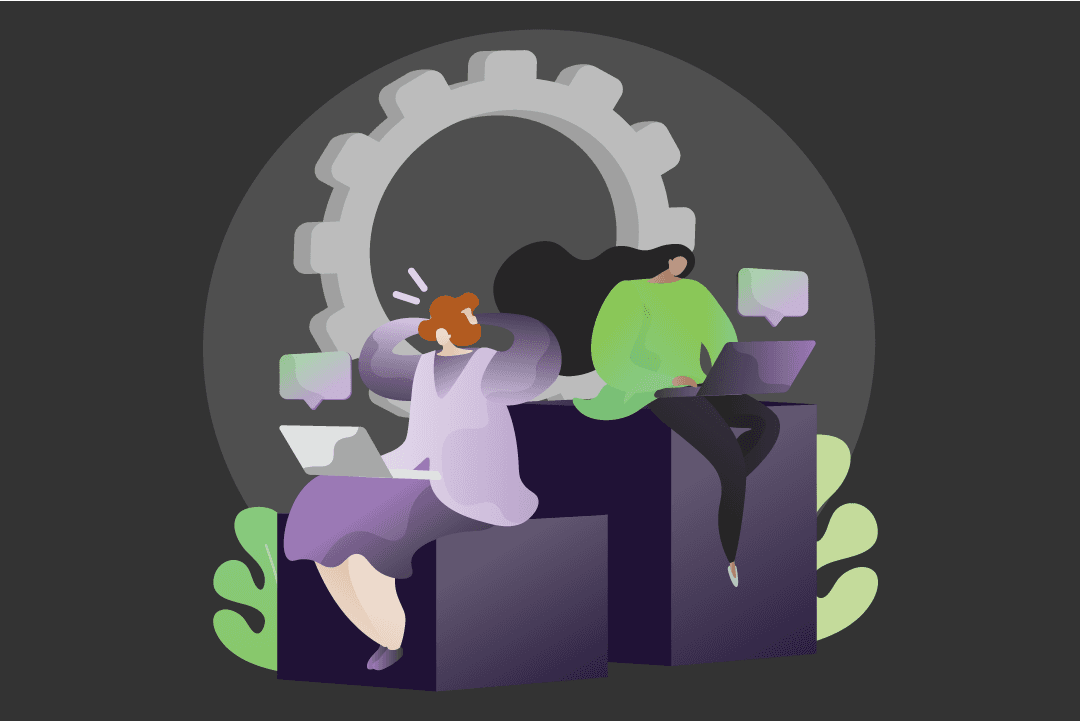
COVID-19 brought unprecedented challenges. Aside from its direct impact on health and wellbeing, the pandemic catalysed an inescapable avalanche: the digital revolution of Australia’s workforce.
Accelerated digitalisation wasn’t something every organisation was prepared for.
Candlefox’s Chief Operating Officer, Wayne George, has seen this first-hand.
“Within our own client base, we’ve seen organisations dramatically accelerating their digital programmes. And in the broader industry landscape, there are organisations that were caught out by the sudden impact of a global pandemic,” George says. “Some organisations were in the throes of designing digital solutions that would enable them to operate more effectively online. In terms of planning horizons, they believed they had months and years before these programmes would be needed.
“With COVID, the world changed.”

Wayne George
Chief Operations Officer, Candlefox
Digital literacy has remained mostly a buzz-word in the past few years. But now it must become a tangible skill for workers: from C-Suite through to employees.
“If you’re an organisation that doesn’t have a digitally literate workforce; if you’re an organisation that can’t quickly turn opportunities in the digital space into reality, you run the risk of being left behind.”
Wayne George
Chief Operating Officer, Candlefox
The time to ‘prepare’ for digitalisation has passed. The only choice left is to adapt — and do so swiftly.
What is digital literacy in 2021?
Digital literacy is an umbrella term for a range of digital skills and knowledge. But at the crux of it lies critical thinking and problem solving for a digital landscape. The digital world moves fast and demands fast-paced thinking to keep up.
As a skill in 2021, digital literacy means intuitively knowing how to use the newest digital tools and programs, but also how to utilise old programs in new ways — to innovate.
It isn’t just a necessary tool for working in a digital landscape. It’s imperative for continued success as an organisation.
Why not just hire to fill digital skills gaps?
Australian businesses currently funnel $7 billion into recruitment per year, while only investing $4.5 billion in training.
It seems hiring is the knee-jerk reaction for filling skills gaps. George says this is an “interesting approach” to the problem.
“Recruiting new employees is a very expensive exercise for any organisation,” he explains. “You’ve got the recruitment fees, you’ve got to pull people off the line and get the new hires set up, operational and understanding your business.
“We have access to top-flight talent recruitment when needed. However, my preference has always been to develop our existing employees as much as possible; in effect preparing them for the opportunities a growth business will inevitably provide.”
This preference has served Candlefox well in their pursuit to excel in a digital environment.
“As a digital company, we need our people to be not just literate in digital and technology, but experts, and therefore the bar for us is high and getting higher,” George says.
Here lies the fallacy of hiring to fill digital skills gaps: regardless of what level of expertise and proficiency new recruits have in a digital landscape, they’ll continue to need digital skills development well into the future.
“For this reason, we invest heavily in training and development,” he explains.

Source: AlphaBeta
The digital world is still evolving, and employees must do the same. Otherwise, you’re only temporarily bridging the digital divide.
L&D can develop a digitally literate workforce — to an extent
With hiring an inadequate solution to bridge the digital divide, L&D would seem the best tactic. But while L&D does play a role in developing a digitally literate workforce, it’s not in the way many organisations believe.
“Now, people are much more self-led. We place our people squarely in the driver’s seat when it comes to designing learning and development programs to suit their individual needs,” George says. This is a stark contrast to traditional L&D approaches.
Traditional learning and development — like continuous learning, top-down frameworks and training models — has lost its footing in modern workplaces. It’s no longer sufficient. Its Net Promoter Score (NPS) of -25 makes this glaringly obvious.
Common criticisms of traditional workplace L&D include:
Unclear priorities
Inadequate investment resulting in low-value training
Inconsistent and limited opportunities
Low visibility of the training that employees actually need
It’s simple enough to say, “We need a digitally literate workforce.” But traditional L&D doesn’t pull back the layers within that statement to consider what digital literacy means to each employee.
This is the ‘low visibility’ criticism in action.
Digital literacy is an umbrella term for a vast range of skills, and different fields require different digital literacy skills. Your content team’s definition of digitally literate will be different to that of your software development team, for example.
This is something that Candlefox’s leadership team have recognised and found a way to overcome.
Raising visibility by understanding what their people need has been one of the key steps in creating effective learning and development.
George explains, “All I need to do is give each person access to the learning and development they need. With this approach, our organisation realises all the richness of our people’s previous experience with us and everything they know about us as a company, now with the addition of these new skills. What follows is these already amazing employees have the opportunity to grow into even stronger professionals.
“One way that we’ve embedded the ideal of L&D in our culture is really through the types of conversations that our leadership team and our people will have on a regular basis.
“These conversations explore: ‘How can we make sure Candlefox is at the forefront of thinking within the individual fields that each of our people works in? And in particular, how can we ensure we are keeping our people in the lead when it comes to professional development in every discipline that is important to our organisation. Disciplines ranging from digital design, software development; content; account management, and sales,” George explains.
The visibility of the skills and development required by each individual team within Candlefox has seen digital skills gaps continuously be bridged.
“Learning and Development is a core focus at Candlefox. Each employee has the opportunity to work with our leadership team to tailor a learning and development program that is specific to them.
“Customising a program for each of our people takes time and effort, but the results in our experience have been absolutely worth the extra investment.”
Wayne George
Chief Operating Officer, Candlefox

TEAM MEMBER TESTIMONIAL
Amber Kirkwood
Digital Product Manager, Candlefox
My time at Candlefox has been one filled with countless opportunities to hone my skills and develop my abilities. I’ve had the chance to work alongside many of our leadership team to learn and grow and better understand the direction I want to move my career in.
When I started here four years ago, I had little digital literacy, having no previous experience in a professional workplace.
Through the company’s ongoing support and commitment to my personal growth, I’ve had the opportunity to develop my abilities in many areas of interest and now have the opportunity to demonstrate them in my day-to-day job working with a range of people from designers through to developers. I’m now able to speak their language and communicate our product vision, which is not something I thought I’d be able to do when I started.
Candlefox’s “ongoing support and commitment” to the growth of their employees highlights one of the facets of a culture of lifelong learning. This is something that the company has been cultivating since its conception.
And this lifelong learning culture is what has kept the company ahead of the digital revolution.
What is lifelong learning?
There’s no standard definition of lifelong learning, but as a concept it represents all kinds of learning undertaken throughout life. We’re continuously learning in all kinds of contexts: at work, in school, through conversations and social interactions, and all kinds of self-directed learning.
As an approach, lifelong learning recognises this. But despite this, It is a proactive and purposeful process for the individual, as opposed to continuous learning, which focuses solely on meeting organisational requirements. Creating an organisational culture that supports and encourages lifelong learning is crucial.
A culture of lifelong learning is the answer to ongoing adaptability in a digital world
So, how does a culture of lifelong learning help an organisation to digitally transform?
Lifelong learning is a tool for adaptability. It ensures that you and your employees are in a constant state of learning and understanding while at work.
“The main reward of creating a culture of lifelong learning within your organisation is that: if you upskill your employees right and you close that digital divide, you are giving your organisation the best chance of success,” George says.
Upskilling your employees “right” is a key part of a successful lifelong learning culture. A large part of it is letting your employees tell you what’s “right” for them.
It’s not just about an individual’s capacity to learn and be passionate. It must be fostered in a supportive environment. Individuals must feel like they can ask for specific or niche training, and that their request will be met with a resounding “yes”.
This is the crux of democratised learning.
Democratised learning: the foundation of an organisational lifelong learning culture
Allowing your employees to take the reins of their own training — known as democratised learning — is a one of the foundational building blocks of creating a lifelong learning culture.
“I never want my people to feel like they are held back or that Candlefox isn’t providing access to what they need to be at the absolute leading-edge within their specific professions,” George says.
It’s tempting to think traditional L&D would cover these needs. But, George says your subject matter experts are the people who truly understand what development they need to excel in their particular field.
“What I ask each of my people to do, is help me understand what training and development you need in order for you to have access to the knowledge and the resources to be the best in your field.”
Wayne George
Chief Operating Officer, Candlefox

TEAM MEMBER TESTIMONIAL
Sarah Ballock
Head of Design, Candlefox
“It’s incredibly valuable and rewarding being able to dictate your own learning direction because you have the opportunity to tailor your training and development to really focus on the areas in your career that you would like to develop and that you are interested in.
“This is extremely beneficial because you get to customise your own experience and make sure that you are motivated and engaged, and that you get the most out of it.”
By nature, digital literacy requires a continuous commitment to learning
The digital divide is a perpetually changing beast.
Gaining digital literacy skills isn’t a box you can tick off and forget about. It requires an ongoing commitment to learning, understanding and innovating.
This is why a culture of lifelong learning is imperative for creating a digitally literate workforce. Employees need to be nurtured in an environment that offers them space and safety to learn, make mistakes and become better. And this all must be able to happen in the everyday context of work.
As Degreed’s How Workers Learn report points out, people primarily learn in the flow of work.
“Digital literacy is a constant pursuit of ours, and we prioritise digital literacy very highly when it comes to developing our people.”
Wayne George
Chief Operations Officer, Candlefox
With employees feeling nurtured and supported, they will be able to continuously bridge digital literacy skills gaps as they arise.
“This requirement for organisations to be in the digital landscape and to operate in the digital world is here now. It’s here faster than some organisations thought it would be. And it’s not going away. Regardless of how well the world handles the COVID-19 pandemic, this need to have not just a physical workforce and not just a physical way of working, but a virtual way of working, it’s here and here to stay,” George says.
“And any organisation that isn’t tackling the digital divide that might exist for them runs the risk of not being able to execute on their mission in this new world that has been dramatically changed.”
